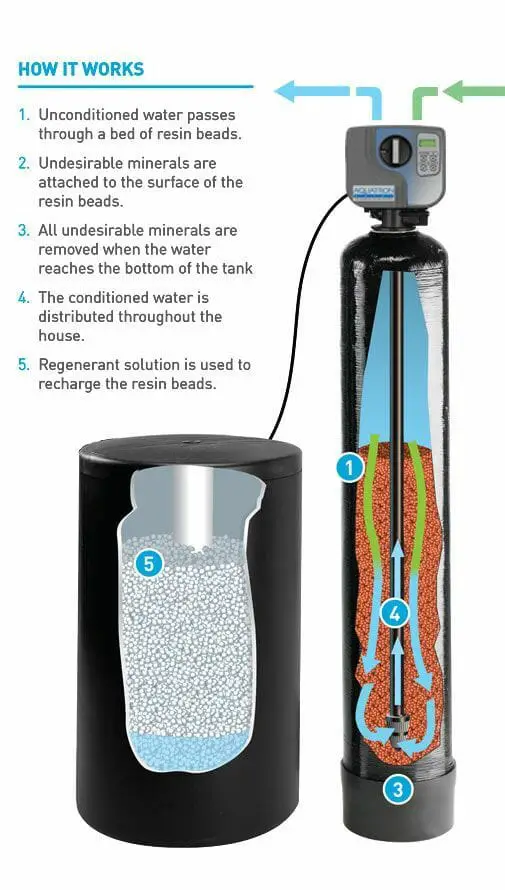Table of Content
Ava has over 10 years of experience in the water filtration industry and has worked with some of the top companies in the field. Hard water minerals are abrasive and can etch fine glassware. And as dishes dry in the dishwasher, excess calcium leaves behind tough-to-clean white spots. Water softening also helps reduce soap scum and improve the taste, smell, and feel of the water.
It is an expensive appliance, and it uses a considerable amount of water. But this type of device is very good at removing other chemical impurities, as well as calcium and magnesium. However, the use of reverse osmosis for drinking water can have negative effects. The human body needs minerals, derived from drinking water among other sources. Long-term use of reverse osmosis can have unintended consequences and actually deplete the human body of important minerals.
Salt Based Water Softeners vs. Saltless Water Softeners
These minerals might be damaging to a plumbing system, but they’re good for our health and give water a pleasant alkaline taste. Salt-softened water isn’t as healthy or as tasty as hard water. When water flows through the resin, the hard water minerals are attracted to, and stick to, the resin. To balance the water’s charge, the resin releases equal amounts of sodium ions, producing soft water. There is water at the bottom of this tank where the salt dissolves.

Traditional water softeners work by ion exchange – exchanging calcium and magnesium ions with sodium ions. You also need to know the level of hard minerals in your water supply to choose the right size softener system and program it properly. A test breaks down your water chemistry and tells you the precise concentration of calcium and magnesium ions. Without hardness minerals, softened water can taste flat or even salty. As the hard minerals pass over the beads, they exchange places with the sodium ions, resulting in soft water.
How Does a Water Softener System Work?
A water softener safeguards your home and increases its resale value. The resin beads must be regenerated periodically with a sodium-based solution to maintain their effectiveness. A fast flow cycle follows to compact the resin bed and wash off the last of the brine and minerals. If you do not manually add the salt and the capacity of the beads to soften is low, the water that comes out of the tank will still be hard. Most newer, high-efficiency water softeners use less than 10 bags of salt per year.
Although salt-softened water is safe to drink, you might not want to add any more salt than necessary into your diet. The good news is that you can use potassium chloride instead of salt if you’re against the idea of salt softening. The calcium and magnesium mineral ions in the water are positively charged.
How Do I Fix Hard Water?
The control valve controls how much water flows out of the resin tank and into your home. The salt mixes with the water at the bottom of the tank to form a salt solution known as brine. You shouldn’t lose sleep over hard water, yet its impact is too serious to ignore. Now that you know how a water softener works, installing one is a simple fix.
Salt-free conditioners use a salt-free process to change the molecular structure of the water, preventing them from being able to bind to surfaces in the form of limescale. Salt-based water softeners, otherwise known as ion exchange softeners, are the most popular and most effective systems available today. The ion exchange process also removes low levels of other dissolved minerals and metals, including iron and copper. Hard water contains calcium and magnesium minerals, which are responsible for limescale – known to stain pipes and water-based appliances, reducing their lifespan. A water softener is plumbed into your main water line near an electrical outlet and a drain, usually in the basement or garage where incoming water enters your home.
🤔 So, How Does a Water Softener Work?
You need to program the maximum capacity of the water softener so that the control valve works automatically. The pre-programmed max capacity of the water softener is dependent on factors such as the number of occupants in your home, hardness of the water, and water usage per day. By so doing, your water will lather faster with soap, and your appliances will have a longer lifespan. The water will also clean you better without drying your hair or your skin. And if you drink water from the tap, magnetic water treatment should not change how your water tastes. While it might taste a little different than a salt-based softener, it should not alter the overall taste of the water that you consume daily.
Typically, water softeners work through the process of ion exchange to turn hard water into soft water. Hard water contains calcium and magnesium, causing a wide variety of household issues due to mineral deposits left behind. An ion exchange water softener uses resin beads housed in the mineral tank to filter the water.
Hard water is challenging to live with but buying a water softener can be equally intimidating. These will reduce the potential of any future problems such as a salt bridge. Salt pellets tend to cause build-up at the bottom of your tank and will cause it to clog eventually if not cleaned properly. Find the right water softener for your home by using this step by step guide. The first step is to place two of your system’s units about six inches to a foot apart on your cold water line.
In the freshly regenerated mineral tank, the beads are now coated with sodium or potassium provided by the brine tank. This small amount of salt displaced from the beads becomes suspended in the water and moves on into the home water supply. This small amount of salt in the water is generally not a problem, except for people who have strict limitations on sodium. Involves an ion exchange process, which removes both magnesium (Mg2+) and calcium (Ca2+) from water. Over time the resin beads in the water softener become saturated with hard minerals and will need to be cleaned with a regeneration process to keep softening water. A strong brine solution from the brine tank is needed to rinse out the accumulated harsh minerals from the resin beads.
But the typical water softener has a bypass valve that lets you switch between soft water and untreated water for select applications. A strong brine solution is created in the brine tank and injected into the resin tank to rinse the beads of the minerals. Because the most charged resin beads are at the bottom of the tank, the system is more efficient. Before the water exits the tank, these highly charged beads remove the hardness. Control valves work based on the demand for water in your house. If you do not understand how to program the water softener, allow IT Landes Home Service Team to program it for you during plumbing and installation of the water softener.

Visit the retailer listed below to shop for your ideal water softening system. The amount of sodium that gets released into a gallon of softened water is about as much as what you’d find in 2 slices of white bread. After the regeneration cycle finishes, the beads will be good as new. These beads can last for thousands of regeneration cycles; 20 years is the standard, which you can learn more about in this article. We can’t answer the question of “how does a water softener system work?

No comments:
Post a Comment